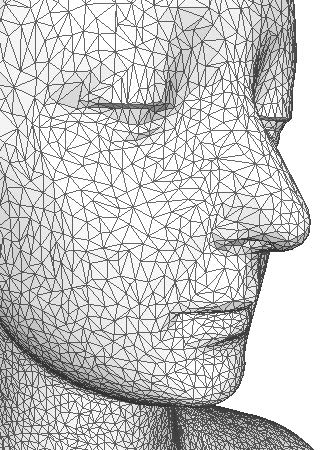Figure 1: 3D surface mesh of a face. |
Partial differential equations (PDEs) are ubiquitous in engineering applications. They mathematically model natural phenomena such as heat conduction, diffusion, and shock wave propagation. They also describe many bioelectrical and biomechanical functions and are a central element of the simulation research of the Center. Analytical solutions for most PDEs are known only for certain symmetric domains, such as a circle, square, or sphere. In order to obtain solutions to PDEs for more realistic domains, numerical approximations such as the finite element method (FEM) are used. In the FEM, both the domain and the PDE are discretized and a numerical solution is calculated using computational resources. The discretization of the geometric domain is called a mesh. Meshes play a vital role in the numerical solution of PDEs on a given geometric domain, the accuracy of which depends on parameters such as the shape and size of the mesh elements. The most commonly used meshes contain tetrahedral elements. While simple conceptually, mesh generation is one of the most computationally intensive tasks in solving a PDE numerically.
